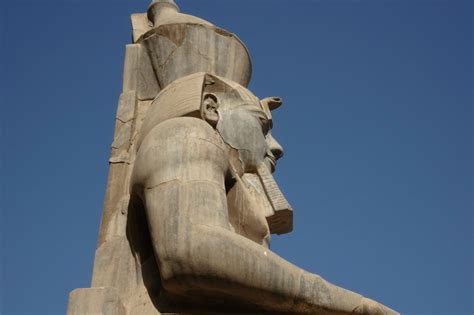Introduction: A City Steeped in History
Nestled along the banks of the Nile River in Upper Egypt, Luxor, formerly known as Thebes, stands as a captivating city shrouded in centuries of rich history. As the capital of Ancient Egypt during the New Kingdom, Thebes witnessed the rise and fall of powerful pharaohs, leaving behind a legacy that continues to mesmerize the world.

With its towering temples, colossal statues, and enigmatic tombs, Luxor transports us back to a time of ancient wonders and monumental grandeur. It is a place where myths and legends intertwine, inviting us to unravel the secrets of a civilization that captivated the imagination of humanity.
Splendors of the Karnak Temple Complex
At the heart of Luxor lies the sprawling Karnak Temple Complex, an architectural masterpiece that covers an area of over 200 acres. Dedicated to the god Amun-Ra, Karnak represents the peak of Ancient Egyptian temple architecture.
Among its many wonders are the towering Great Hypostyle Hall, supported by 134 massive columns, and the Obelisk of Thutmose III, a colossal monument that stands over 200 feet tall. The complex is also home to the Temple of Khonsu and the sacred lake, offering visitors a glimpse into the religious practices of the pharaohs.
Valley of the Kings: Royal Necropolis
Just west of Luxor, the Valley of the Kings served as the burial ground for the pharaohs of the New Kingdom. Carved into the sheer cliffs, these elaborate tombs are a testament to the architectural ingenuity and artistic skill of Ancient Egypt.
Among the most famous tombs is the Tomb of Tutankhamun, discovered in 1922 by Howard Carter. Filled with an astonishing collection of gold and artifacts, Tutankhamun’s tomb has captivated the world and shed light on the grandeur of royal Egyptian burials.
Temple of Hatshepsut: Architectural Marvel
On the west bank of the Nile River, the Temple of Hatshepsut is an architectural marvel that defies time. Dedicated to Hatshepsut, one of Egypt’s most renowned female pharaohs, the temple is known for its unique terraced design and stunning reliefs depicting scenes from Hatshepsut’s life and reign.
With its harmonious proportions and intricate details, the Temple of Hatshepsut is a testament to Hatshepsut’s power and vision. It remains a source of inspiration for architects and visitors alike.
The Colossal Statues of Memnon
Standing sentinel at the entrance to the Temple of Amenhotep III are the Colossal Statues of Memnon. These two massive statues, each measuring over 60 feet tall, were carved from a single block of quartzite and represent Amenhotep III and his wife, Tiye.
The statues have become famous for their ability to “sing” at sunrise due to a unique acoustic effect within their massive structures. This enigmatic phenomenon has captivated travelers for centuries.
Luxor Today: A Living City
Despite its ancient origins, Luxor is a vibrant and dynamic city. The city’s population of over 500,000 is a blend of locals and visitors from around the world.
The tourism industry is a vital part of Luxor’s economy, with millions of visitors flocking to the city each year to experience its cultural heritage. The city is also home to several universities and a thriving arts and cultural scene.
Luxor and Modern-Day Applications: A Creative New Word
The enduring legacy of Luxor continues to inspire modern-day innovations. The city’s architectural wonders, intricate designs, and resourceful engineering have sparked creative ideas in various fields.
From the sustainable and energy-efficient design of Karnak’s Great Hypostyle Hall to the precision engineering behind the Valley of the Kings’ intricate tunnels, Luxor offers a wealth of knowledge and inspiration for modern-day applications.
Architects, engineers, and designers are exploring innovative ways to integrate the principles and aesthetics of Ancient Egyptian architecture into contemporary design. The result is a fusion of ancient wisdom and modern ingenuity, creating structures that are both functional and aesthetically pleasing.
Conclusion: A Timeless Legacy
Luxor stands as a testament to the enduring power of human creativity and the resilience of ancient civilizations. Its temples, tombs, and statues have survived centuries of time, weathering wars, natural disasters, and the passage of time to continue to inspire and captivate us today.
As we continue to explore the mysteries of Luxor, we gain not only a deeper understanding of our past but also invaluable insights that can guide our future. The legacy of this ancient city is a reminder of the human capacity for innovation, ingenuity, and the pursuit of the extraordinary.
